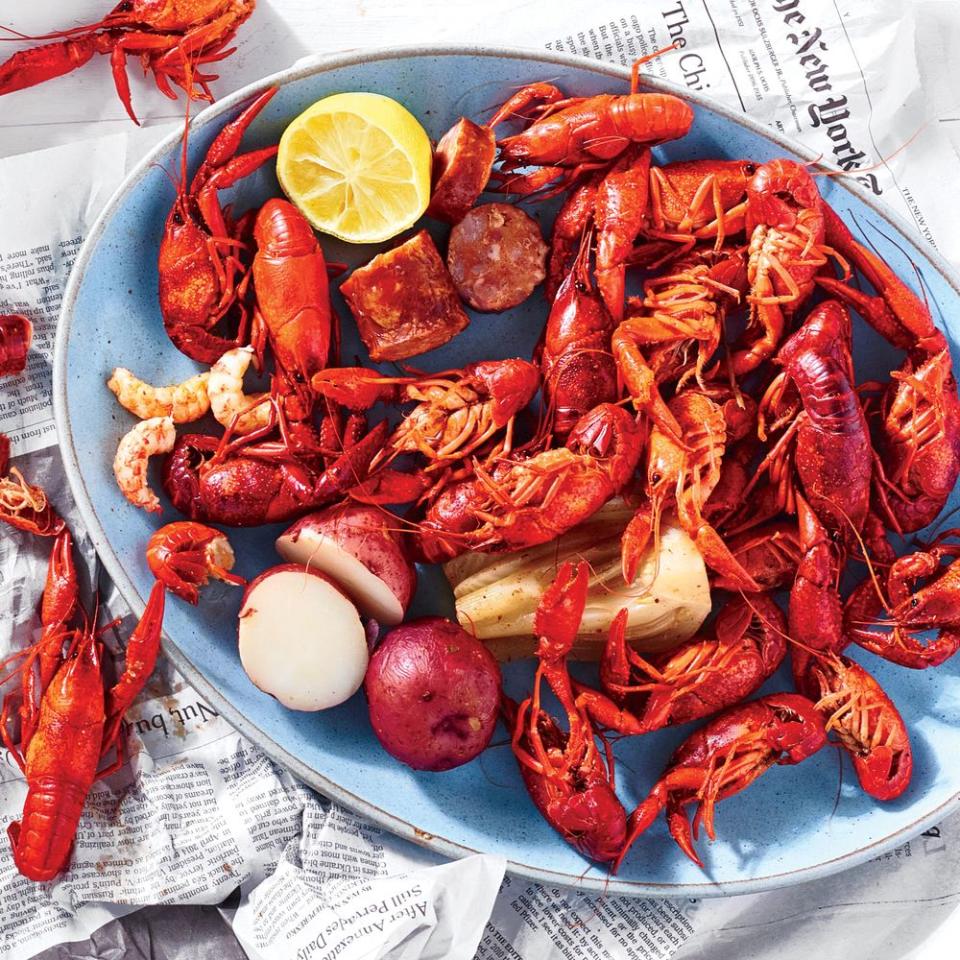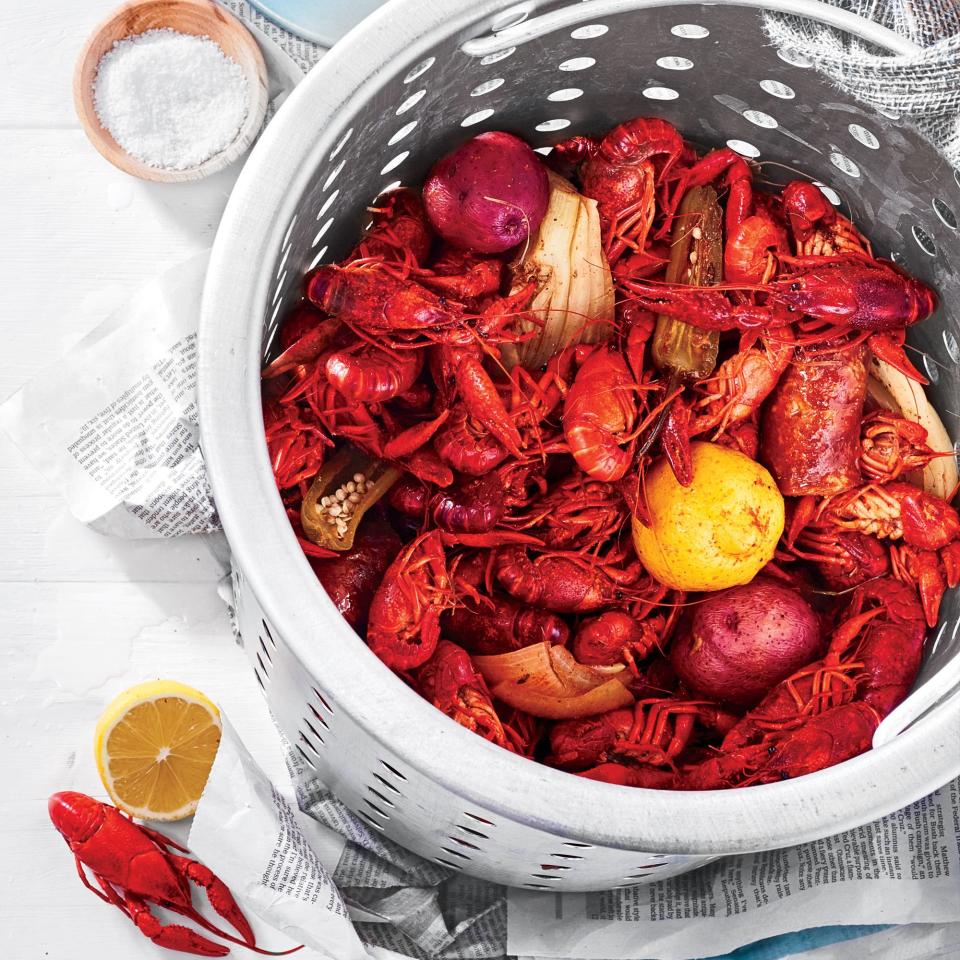The Hunt for Wild Crawfish
Driving just north of Vermilion Bay, I pull off I-10 and find my way back, back into the misty swampscape of Henderson, Louisiana. Meandering down country lanes, up and over the levee, I'm on my way to see a legend in the lore of Louisiana seafood culture. A proud Acadian, Sherbin Collette has been fishing the swamps of the Atchafalaya basin since he was 12. He's also been the mayor here in Henderson for the past 12 years. This wetland, the largest in the country, is constantly shifting under pressure from dams, diversion, drainage, siltation, and storms. Collette has seen these changes, and knows what bounties these waters have to offer.
Perhaps chief among them is the iconic Louisiana crawfish. Most of the crawfish we eat in this country are sustainably farmed here (though you can find small harvests in other states, too). A small percentage, however, is wild-caught. Today, Collette is showing me how it's done. We skim out in an aluminum boat to retrieve his crawfish bags—mesh sacks hung from hollowed cypress trees. Spanish moss is dangling, obstructing our view, but he gracefully pulls the traps from the murky water and empties the crawfish onto the deck of the boat. Moments later, we're in the next cypress grove, repeating the process at impressive speed.
The season for crawfish usually begins around mid-November and carries on through the spring. But the mayor tells me that his favorite time to eat them is after Mardi Gras, when they are feeding in abundance, yielding fat that is yellow and rich. These crawfish—or "mudbugs," as they're sometimes known here—are one of the great delicacies of Creole cuisine.
Recipe: Click for Barton's Crawfish Boil Recipe (shown below)

But there is nothing delicate about eating these red-shelled beauties. Looking a bit like miniature Maine lobsters, whole crawfish are traditionally submerged in boiling water, beer, and large quantities of "boil spice"—usually a mix of paprika, garlic, onion, herbs, and chiles. When they are almost cooked through, the heat is turned off, and the crawfish are left to simmer and absorb all of the flavorful liquid. A proper "boil" (see my recipe) is almost always served family style, and includes other ingredients such as spicy andouille sausage, corn, and potatoes.
So, if you want to find great food and a slice of Acadian culture, ease off the interstate and ramble your way down the levee until you hear the zydeco thumping. Amid the steamy heat and banks of crawfish, you'll find the mayor presiding.
How to Eat a Crawfish
Snap the head away from the body, and, if you'd like, squeeze the juices from the head into your mouth. (The flavor is pure essence of the South!) Discard the head and use your thumb and forefinger to peel the shell back and pop the meat from the tail.
What to Drink
Maybe a Sazerac cocktail to get you warmed up, sure. But then it's all about the beer. Ice-cold Abita Amber or Abita Andygator are two Louisiana-made beauties that pair perfectly.
Barton Seaver is a chef, sustainable seafood expert, National Geographic Explorer, and the author of several books, including For Cod and Country.



